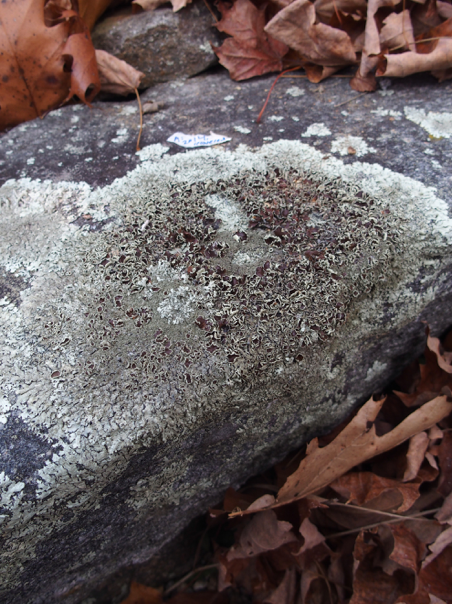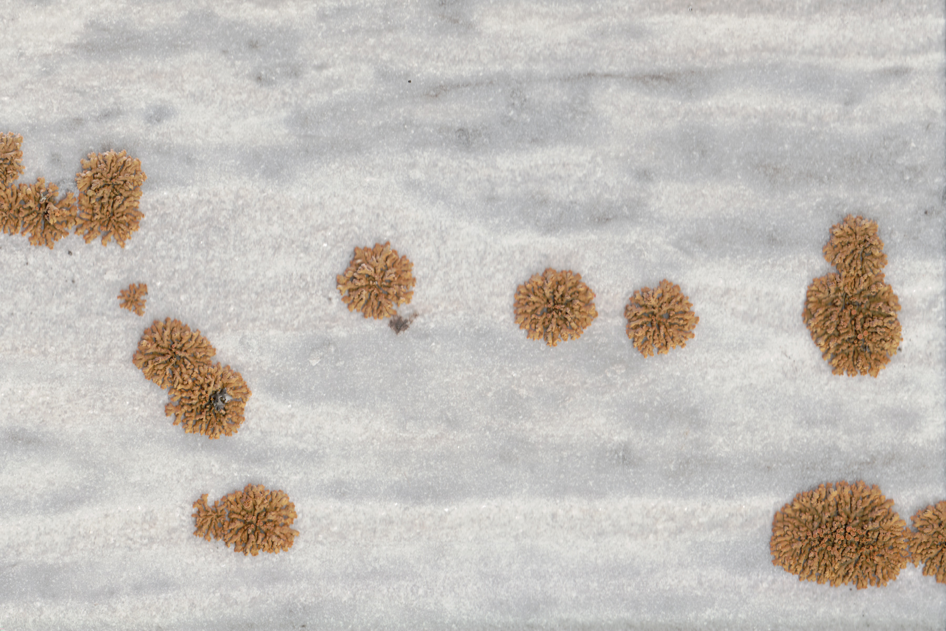 |
 |
|
Lichen Demography Project While the classical evolutionary theory of senescence (e.g. Hamilton 1966) argued that "any conceivable organisms" should start suffering the ill effects of aging after reaching reproductive age, several types of animals have now been shown to show little or no aging. Characteristics common to many of these animals include indeterminate growth, the ability to regenerate any tissue, the lack of a firm germ-soma distinction, the tendency for extrinsic risk to dominate mortality, and the protective value of increased size against such risk. If these factors are causally related to the failure to senesce, then encrusting lichens, which have all of the above listed characteristics, should also fail to senesce, despite being quite differently organized than are most animals.
1. A long term field study of Xanthoparmelia lichens in cemeteries. With data spanning from 2005-2017, we are using the methods of population ecology (tracking individual growth, reproduction, survival, and physiological measures) and the quantitative methods of demography to look for signs of aging in multiple cohorts of lichens. 2. Individual based stochastic simulations of lichen populations with different aging patterns. Theory tells us at what age senescence should start (when members of the population are old enough to reproduce) but is less clear on how quickly it should proceed. We are simulating lichen populations that experience different rates of senescence (Gompertz's b) to understand how slowly senescence could proceed before we would expect to see any sign of it. 3. An analysis of size-frequency distributions, growth patterns, and estimated ages from published studies of natural lichen populations and our own field surveys of multiple types of lichens. Senescence, if present, should influence the shape of a population's size-frequency distribution. In combination with our stochastic simulations, we will be able to put an upper limit on how quickly wild lichen populations age. |


|